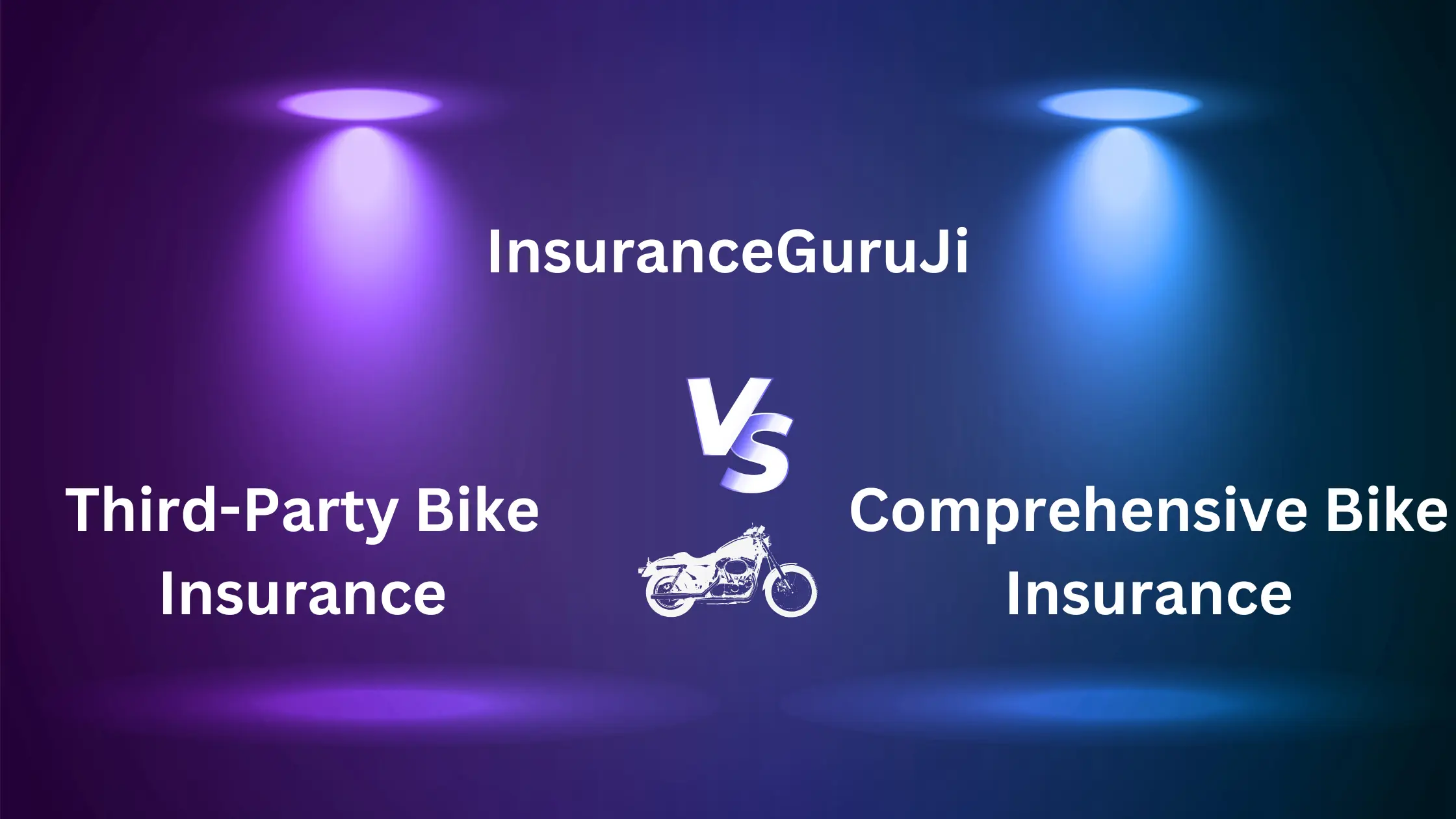Navigating the world of bike insurance in India can feel overwhelming, especially when you’re torn between affordability and robust coverage. With road accidents involving two-wheelers accounting for nearly 37% of total road crashes (Ministry of Road Transport and Highways, 2022), having the right insurance isn’t just a legal formality—it’s a financial safety net. But which policy suits your needs: third-party or comprehensive bike insurance? Let’s break it down.
Why Bike Insurance is Non-Negotiable in India
Under the Motor Vehicles Act, 1988, all bike owners must carry at least third-party liability insurance. Driving without it can lead to hefty fines, vehicle impounding, or legal trouble. Beyond compliance, insurance shields you from unexpected expenses due to accidents, theft, or natural disasters. The real question is: Should you stick to the basic third-party cover or invest in comprehensive protection?
You Must know – Why Bike insurance is important?
Third-Party Bike Insurance: The Legal Bare Minimum
What Does It Cover?
Third-party insurance, also called liability-only insurance, covers:
- Injury/death claims by affected third parties (pedestrians, other drivers).
- Damage to third-party property (e.g., vehicles, buildings).
- Legal expenses if sued by the affected party.
What’s Not Covered?
- Repairs for your own bike.
- Medical bills for your injuries.
- Theft, fire, or natural disasters.
Cost and Regulation
The Insurance Regulatory and Development Authority of India (IRDAI) fixes third-party premiums annually. For bikes under 350cc, premiums range from ₹538 to ₹1,194/year (2023 figures). While affordable, this policy offers limited protection.
Best For:
- Older bikes with low market value.
- Riders on a tight budget.
- Secondary bikes rarely used.
Comprehensive Bike Insurance: Complete Peace of Mind
What Does It Cover?
A comprehensive policy combines own-damage (OD) cover and third-party liability, plus add-ons like:
- Accidental damage to your bike (collisions, crashes).
- Theft, fire, explosions, or natural disasters (floods, earthquakes).
- Personal accident cover for rider/passenger injuries.
- Optional add-ons: Zero depreciation, engine protection, roadside assistance.
Cost Factors
Premiums depend on:
- Bike’s age, make, and IDV (Insured Declared Value).
- Location (urban areas have higher theft rates).
- No Claim Bonus (NCB) discounts (up to 50% for claim-free years).
Expect to pay 2-3% of your bike’s IDV annually. For a ₹1 lakh bike, premiums start around ₹2,000–₹3,000/year (excluding add-ons).
Best For:
- New or high-end bikes.
- Daily commuters in accident-prone areas.
- Riders wanting minimal out-of-pocket expenses during claims
Third-Party vs Comprehensive Bike Insurance: Head-to-Head Comparison
| Factor | Third-Party Insurance | Comprehensive Insurance |
|---|---|---|
| Coverage | Only third-party liabilities | Own damage + third-party + add-ons |
| Cost | Low (₹500–₹1,200/year) | Higher (₹2,000–₹5,000+/year) |
| Claim Process | Lengthy (third-party approval) | Faster (direct settlement with insurer) |
| Flexibility | No customization | Customizable with add-ons |
| Legal Compliance | Meets minimum requirement | Exceeds legal requirements |
Pros and Cons of Third-Party & Comprehensive Bike Insurance
Third-Party Insurance
Pros:
- Budget-friendly.
- Fulfills legal obligations.
Cons: - No coverage for own damages.
- Rising claim liabilities can strain finances.
Comprehensive Insurance
Pros:
- All-round protection for bike and rider.
- Add-ons enhance coverage.
- NCB rewards for safe riding.
Cons: - Higher premiums.
- Complex policy terms.
How to Choose the Right Policy: 5 Key Factors
- Bike’s Age and Value:
- New bikes → Comprehensive.
- Bikes >10 years → Third-party (unless sentimental value).
- Usage Frequency:
- Daily rides → Comprehensive (higher accident risk).
- Occasional use → Third-party.
- Financial Safety Net:
- Can you afford sudden repair costs? If not, go comprehensive.
- Location Matters:
- Theft-prone cities (Delhi, Mumbai) → Comprehensive + anti-theft add-ons.
- Long-Term Savings:
- Comprehensive policies with NCB can save money over time.
Expert Tip: Blend Both with a Standalone Own-Damage Policy
If you already have third-party insurance but want extra protection, buy a standalone own-damage (OD) policy. It’s cheaper than comprehensive but covers repairs for your bike.
Final Verdict
While third-party insurance keeps you legally compliant, comprehensive coverage is a smarter investment for most riders. It minimizes financial risks during accidents, theft, or disasters, ensuring you’re never stranded. For older bikes, third-party might suffice, but weigh the potential repair costs against premium savings.
Still unsure? Consult an insurance advisor or use online premium calculators to compare policies tailored to your bike’s value and riding habits. Remember, the right insurance isn’t about price—it’s about peace of mind.
